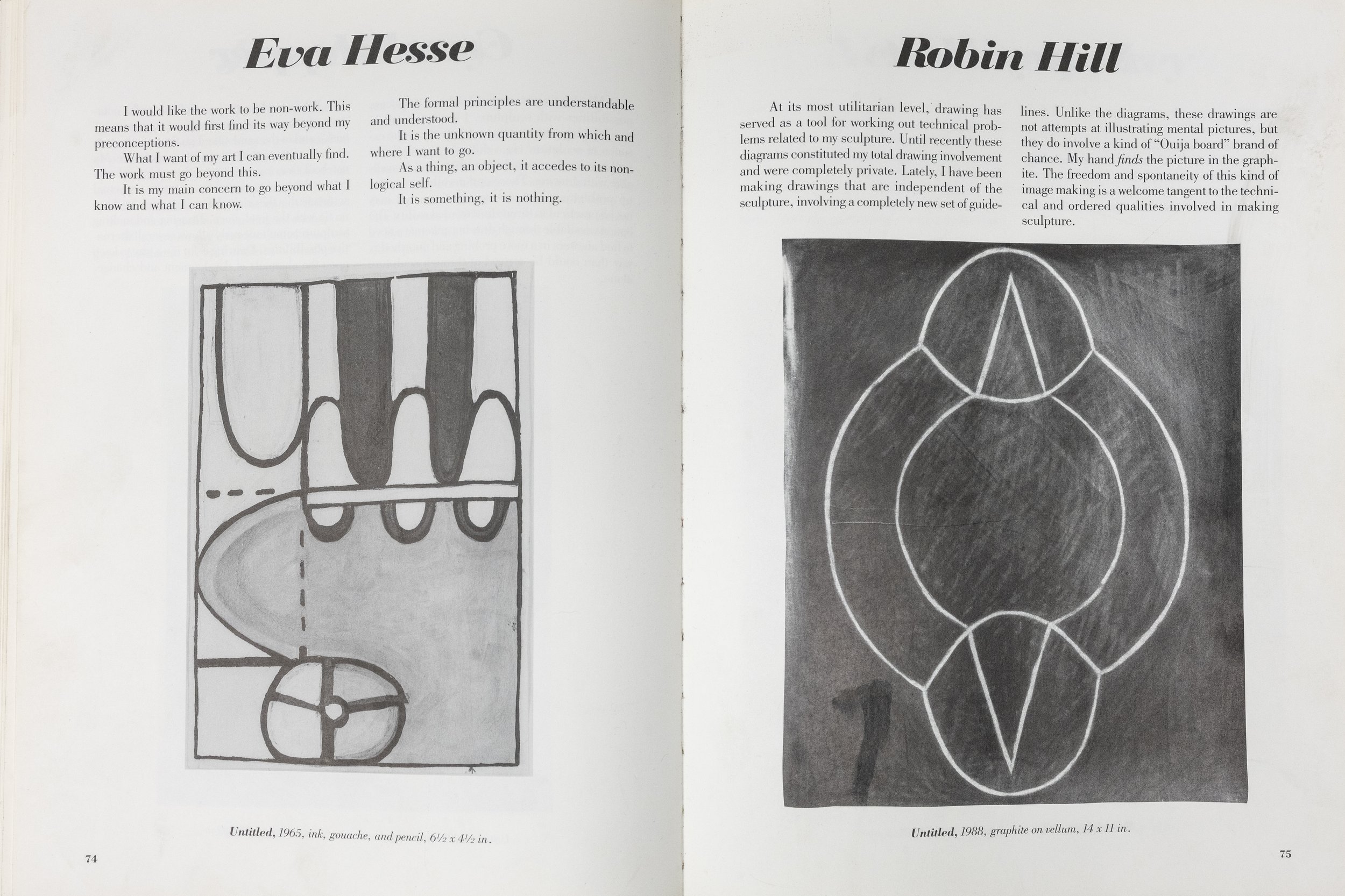Lines of Vision: Drawings by Contemporary Women
May 24 - June 28, 1989
Hillwood Art Gallery, Long Island University
Brookville, NY
July 6 - August 17, 1989
Blum Helman Gallery
80 Greene Street, New York, NY
Announcement Card
This exhibition that will travel domestically, a companion show touring internationally under the auspices of the United States Information Agency and an accompanying book published by Hudson Hills Press*, are all intended to present the remarkable amplitude and vitality operative in the enlarged area of drawing by women artists. A hallmark of contemporary art in the 1980s, is expansion of an already multiform field to include the work of women and people of color, namely Afro-Americans, Hispanics and Native Americans. Moreover, various conventional categories, such as painting, sculpture and drawing may no longer be defined by traditional expectations. Painting, for example, can be three-dimensional, constructed or molded, while sculpture is painted, flat and illusionistic. Likewise, the orthodox tenets of drawing have been relaxed to encompass variety in format.
Today, drawings may involve painting or entail use of collage and photography. Pencil and charcoal have been supplemented by pastel, oil, acrylic, craypas, powdered iron and gold leaf. Drawn lines and modulated volumes have been augmented with painterly surfaces, glued collage materials and built up or hollowed our picture planes. Media have been increased to allow dirt, screen, leaves, mylar and wire. This propagation of matter and methodology has resulted in extended content coinciding with the complexity and proliferation involved in life today. Also reflected is modernist emphasis on new and novel means as well as heightened importance placed upon the value and validity of individual expression.
Some interesting ingredients of this current melange are the contributions to art by women who have largely lacked written and revered records of pastfemale accomplishments. Thereby, they have been denied the support and respect a history or heritage provides, but they have gained ground in terms of an access to freedom manifesting itself in the form of employment of unusual materials and techniques. They have been successful in enlarging the fabric of art with beads, glitter, ribbon and lint and by sewing, kneading, weaving and quilting. In addition, women have been concerned with both spiritual meanings, those concerned with mythology and supernaturalism, as well as concepts derived from an inner voice and personal experience. Likewise, women have realized trenchant political statements and architectonic formats basing structure on fantasy or actual patterns and arrangements. They have emphasized collaboration and have encouraged representation of minority art in alternative spaces, cooperatives, commercial galleries and museums. Generally, women have played a catalytic role in establishing the potency of a multilateral pluralism in art today.
Although their history has received little attention until recently, white women as well as those of color have been enterprising in researching and realizing the power and applicability of certain arts practiced by their female forebearers. For some this has meant incorporating not only the "know-how" and "stuff" of domesticity or traditional cultural functions, but also communicating special imagery and idea. They may intermingle the shapes of hearts, flowers or children with words or mechanics in conveying particular intentions. Whether the process is subjective via emotional outpouring, or objective and intellectual, there is an assertion of private experience, singular realization and knowledge. Women of differing races, creeds, beliefs and backgrounds have fostered and produced a rich diversity and potent profusion of styles and expressions, each representing the uniqueness and importance of the individual person. - Judy Collischan Van Wagner










